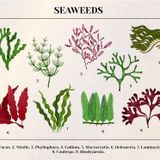Understanding the 5:2 Diet
The 5:2 diet is a form of intermittent fasting that involves eating a normal, healthy diet for five days each week and significantly reducing your calorie intake on the remaining two non-consecutive days. Typically, women are advised to consume 500 calories and men 600 calories on fasting days.
Health Benefits of the 5:2 Diet
- Weight loss: By reducing overall calorie intake, the 5:2 diet can lead to weight loss. A study published in the British Journal of Nutrition found that intermittent fasting could be as effective as traditional calorie-restricted diets for weight loss and reducing body fat (Harvie et al., 2011).
- Improved insulin sensitivity: Intermittent fasting may help improve insulin sensitivity, which could reduce the risk of developing type 2 diabetes. A 2018 study published in Obesity found that intermittent fasting improved insulin sensitivity in overweight and obese individuals (Carter et al., 2018).
- Cardiovascular health: The 5:2 diet has been shown to have potential benefits for cardiovascular health. A study published in the International Journal of Obesity found that intermittent fasting reduced blood pressure, total cholesterol, and triglycerides (Varady et al., 2011).
- Neurodegenerative diseases: Some research suggests that intermittent fasting could have protective effects against neurodegenerative diseases like Alzheimer's and Parkinson's. A 2017 review published in the journal Ageing Research Reviews suggested that fasting could help protect neurons from age-related damage (Longo and Mattson, 2017).
- Cancer risk: Although more research is needed, some studies have suggested that intermittent fasting may help reduce the risk of certain types of cancer. A 2014 review published in Nutrition and Cancer concluded that intermittent fasting may have potential benefits in cancer prevention and treatment (Chaix et al., 2014).
(1)Carter, S., Clifton, P. M., & Keogh, J. B. (2018). The effects of intermittent compared to continuous energy restriction on glycaemic control in type 2 diabetes; a pragmatic pilot trial. Diabetes Research and Clinical Practice, 138, 251-258. (2)Chaix, A., Zarrinpar, A., Miu, P., & Panda, S. (2014). Time-restricted feeding is a preventative and therapeutic intervention against diverse nutritional challenges. Cell Metabolism, 20(6), 991-1005. (3)Harvie, M. N., Pegington, M., Mattson, M. P., Frystyk, J., Dillon, B., Evans, G., ... & Howell, A. (2011). The effects of intermittent or continuous energy restriction on weight loss and metabolic disease risk markers: a randomized trial in young overweight women. International Journal of Obesity, 35(5), 714-727. (4)Longo, V. D., & Mattson, M. P. (2017). Fasting: molecular mechanisms and clinical applications. Ageing Research Reviews, 39, 46-58. (5)Varady, K. A., Bhutani, S., Church, E. C., & Klempel, M. C. (2011). Short-term modified alternate-day fasting: a novel dietary strategy for weight loss and cardioprotection in obese adults. American Journal of Clinical Nutrition, 90(5), 1138-1143
Recipes for Your 5:2 Diet Journey
Cauliflower Rice Stir-Fry (250 calories per serving)
Ingredients:
- 1 cup cauliflower rice
- 1/2 cup mixed vegetables (e.g., bell pepper, carrot, peas)
- 3 oz cooked chicken breast, diced
- 1 tbsp soy sauce
- 1 tsp sesame oil
- 1 clove garlic, minced
- Salt and pepper to taste
Instructions:
- Heat the sesame oil in a pan over medium heat. Add garlic and cook for 1 minute.
- Add mixed vegetables and cook for 3-4 minutes, or until softened.
- Add cauliflower rice and cook for 2-3 minutes.
- Stir in cooked chicken and soy sauce. Cook for another 2 minutes, or until heated through. Season with salt and pepper.

Photo by Tosca Olivi on Unsplash
Greek Salad with Tuna (200 calories per serving)
Ingredients:
- 2 cups mixed greens (e.g., lettuce, spinach, arugula)
- 1/2 cup cherry tomatoes, halved
- 1/4 cup cucumber, sliced
- 1/4 cup red onion, thinly sliced
- 1/4 cup black olives, pitted
- 3 oz canned tuna, drained
- 1 tbsp red wine vinegar
Instructions:
- In a large bowl, combine mixed greens, cherry tomatoes, cucumber, red onion, black olives, and tuna.
- In a small bowl, whisk together red wine vinegar, olive oil, salt, pepper, and oregano.
- Pour dressing over the salad and toss to combine.
Questions and Answers
Q: Is the 5:2 diet suitable for everyone?
A: The 5:2 diet may not be suitable for everyone, particularly those with certain medical conditions, pregnant or breastfeeding women, and individuals with a history of eating disorders. Consult with a healthcare professional before starting any new diet.
Q: Can I exercise on fasting days?
A: Moderate exercise is generally safe on fasting days, but intense workouts may be challenging due to reduced energy levels. Listen to your body and adjust your activity accordingly.
Q: Can I drink coffee or tea during fasting days?
A: Yes, you can drink coffee and tea without added sugar, milk, or cream on fasting days, as they contain minimal calories. Hydrating with water is also important.
Q: Can I follow the 5:2 diet long-term?
A: The 5:2 diet is generally considered safe for long-term use, but it's essential to ensure you're meeting your nutritional needs. Consult a healthcare professional or registered dietitian for personalized guidance.
Q: How can I manage hunger on fasting days?
A: Drinking water, herbal tea, or black coffee can help manage hunger on fasting days. Additionally, prioritize high-fiber, low-calorie foods to promote satiety.








